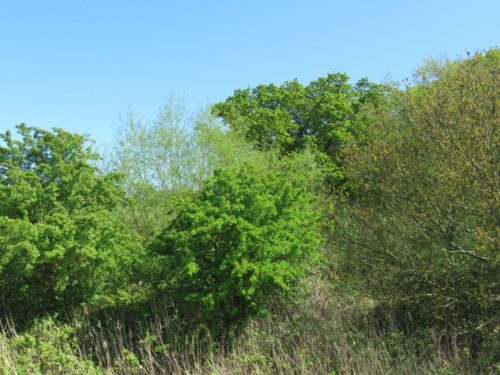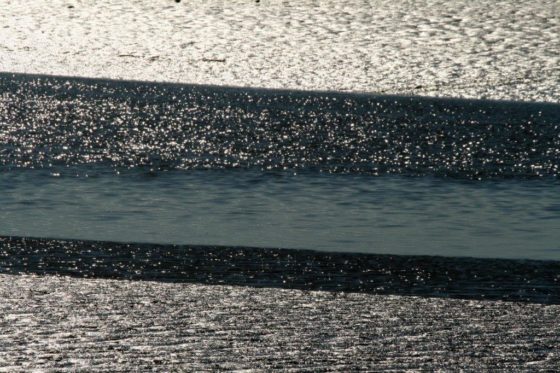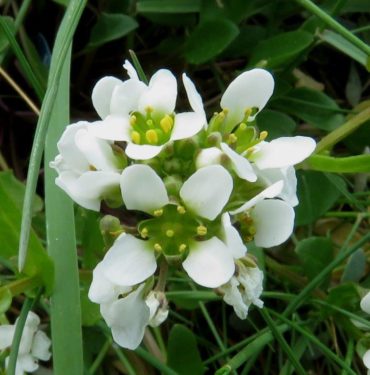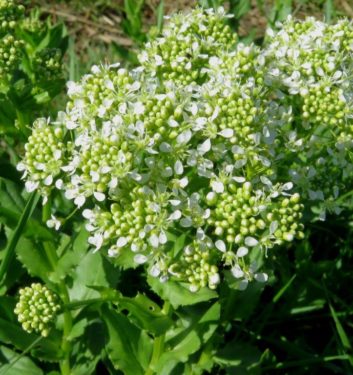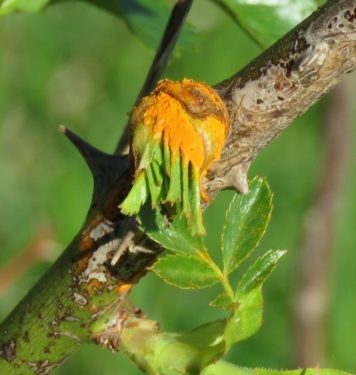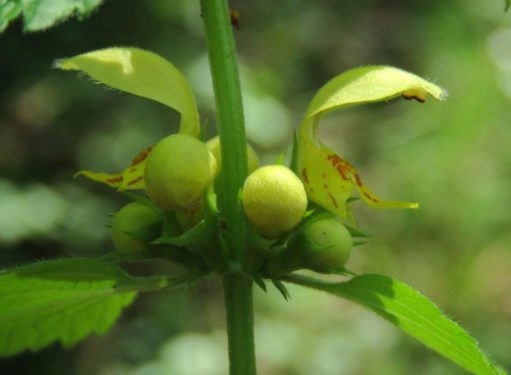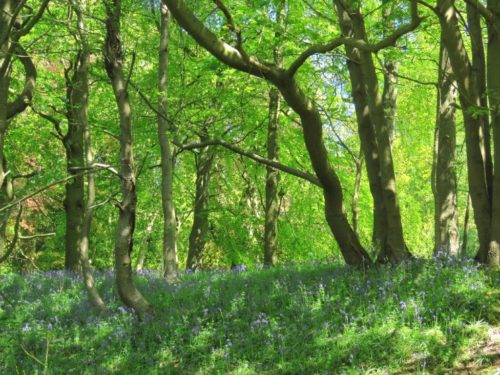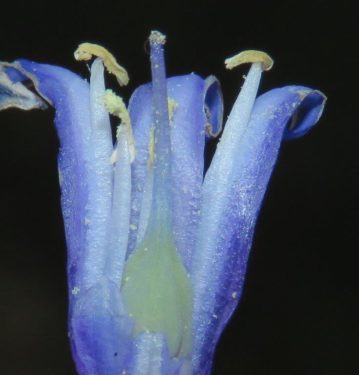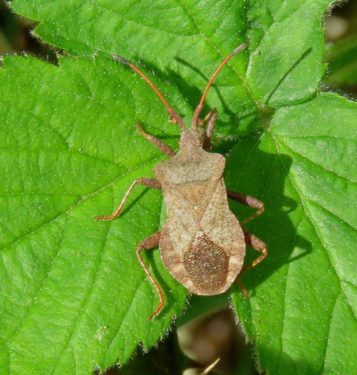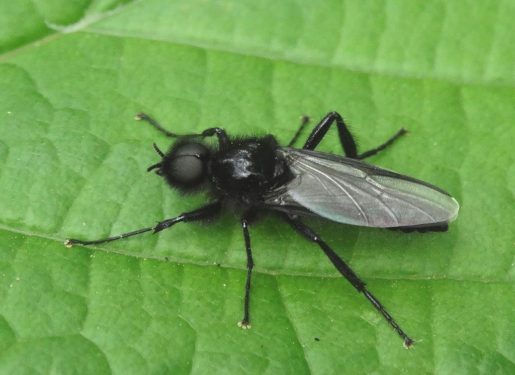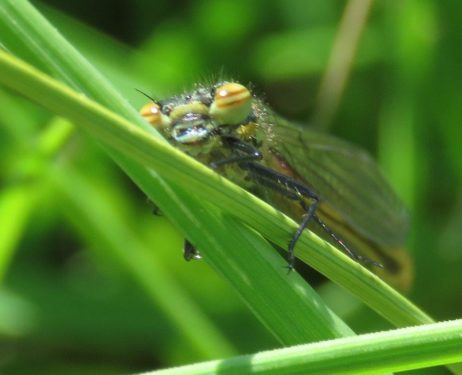Another very enjoyable Botany and Bug walk this morning, and our thanks to all of you who were able to join us. The perfect sunlight enhanced the landscape, with a multitude of green hues on the foliage as well as the splendid sparkling water and shining mud banks.
Much of the flora on show is very relevant to our part of the coast, including the Scurvy Grass and Thanet Weed, salt-tolerator and invasive plant which arrived through the ports of the south-east respectively.
The Rose Rust fungus, not seriously damaging to the host plant, was a very colourful addition to the morning. Once we entered the shady wooded part of the walk, the flora changed to include Yellow Archangel, Herb Robert and of course Bluebells. The native Bluebell was in abundance at Grange Wood, and close examination revealed cream pollen on the stamens. The larger Spanish Bluebell, so common in gardens and a risk to our native species through genetic pollution, has blue pollen, which is one way of telling the difference! Another is the difference in distribution of flowers around the stem: natives have flowers on one plane, whereas the Spanish are placed all around the stem.
We were of course also on the lookout for bugs and beasties, and search was rewarded with the splendid Squash Bug. St Mark’s Flies -all dangling legs and fearsome-looking, but entirely harmless – were on the wing in fine number, many feeding on umbellifers, and others, less fortunate, entangled in spider’s webs awaiting their certain fate. A field day for local spider population!
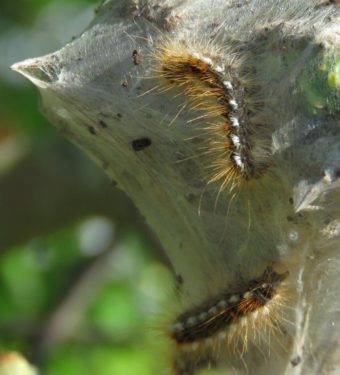 Several nests of the highly-irritant Brown Tail moth caterpillars were seen. Although interesting to observe, it isn’t recommended to touch the insect as a nasty rash may result. As with all wildlife, respect is the key. And remember, they are a good food source for one of out most loved birds, the Cuckoo.
Several nests of the highly-irritant Brown Tail moth caterpillars were seen. Although interesting to observe, it isn’t recommended to touch the insect as a nasty rash may result. As with all wildlife, respect is the key. And remember, they are a good food source for one of out most loved birds, the Cuckoo.
On the way back some of us were fortunate to espy a Large Red Damselfly basking and soaking up the sun. The first damselfly of the summer, and hopefully a sign of a good one for weather and wildlife alike.
